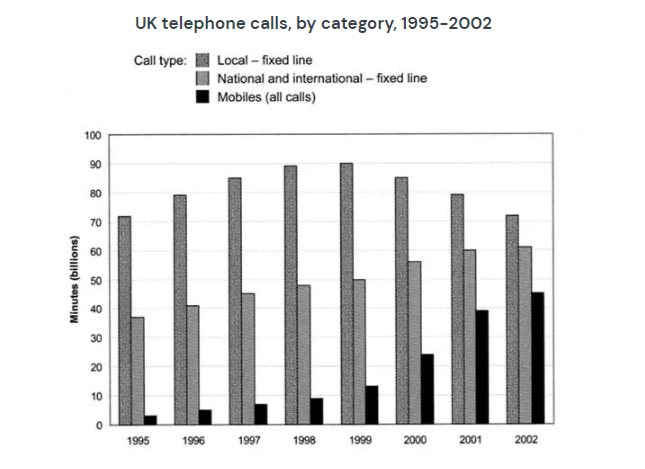CAMBRIDGE 9
LISTENING CAM-9
READING -ACADEMIC CAM-9
READING-GENERAL CAM-9
WRITING- CAM-9

The two maps below show an island, before and after the construction of some tourist facilities.
Summarise the information by selecting and reporting the main features, and make comparisons where relevant.

Sample Essay
The two maps display an island before and after some tourist facilities were constructed.
Overall, with the construction of different types of facilities, the island has been transformed into a tourist attraction where people can stay, eat, play, and easily get around.
The island is about 250 meters long. Before development started, it only had a beach along its western coast and some stands of palms near its eastern and western ends. These natural features have remained unchanged after development.
However, two accommodation areas with footpaths have been built in the center and west of the island respectively. The footpaths in the western accommodation area have been extended westward to the beach where people can now go swimming. Between the two accommodation areas is the reception, which is surrounded by a vehicle track. This track connects with the footpaths west of it and extends northward to a new restaurant and southward to a new pier. The eastern part of the island remains unspoiled.
Some experts believe that it is better for children to begin learning a foreign language at primary school rather than secondary school. Do the advantages of this outweigh the disadvantages?
Sample Essay
Some experts believe that starting learning another language at primary level is better than at secondary level. I think the downside of this outweighs the upside because young pupils may have a great workload as a result.
On the one hand, young children are better language learners than older ones. Primary school-aged children are at an early stage of learning, and therefore tend to be very open to new ideas. That is to say, they are less likely to find the different pronunciation and grammar of a foreign language
On the other hand, studying a new language at primary level can greatly increase young pupils’ workloads. One more language to learn means more classes to take and more schoolwork to do. Take China, where English is compulsory at all primary schools. Chinese pupils often spend about half an hour every weekday just on their English homework. And to outperform their peers, many of them enrol in weekend English classes. I think this puts young pupils at a great disadvantage because at their age, they should spend more time enjoying leisure activities rather than burying themselves in endless academic tasks.
In conclusion, although primary school-aged children tend to be good at acquiring a foreign language, I believe this advantage is far outweighed by the disadvantage of the heavy workloads that come with it.

The chart below shows the total number of minutes (in billions) of telephone calls in the UK, divided into three categories, from 1995-2002. Summarise the information by selecting and reporting the main features, and make comparisons where relevant.

Sample Essay
The bar graph displays total call duration in the UK by category from 1995 to 2002.
Overall, while local calls made over landlines remained the most common calls during the 7-year
period, it was mobile calls that showed the greatest increase.
Nearly 75 billion minutes were spent on fixed-line local calls in 1995. This number then climbed to a
maximum of 90 billion minutes in 1999 before returning to its original level by 2002. Despite the
decrease, this type of call was more common than the other two types throughout the entire period.
National and international calls made from landlines were the second biggest category. Their figure
rose steadily from roughly 35 to 60 billion minutes over the period. In comparison, only a total of
about 5 billion minutes of calls were made on mobiles in 1995. This number first rose slowly to 10
billion minutes in 1998 and then soared to 45 billion minutes in 2002. Even though mobile calls were
the least common calls over the period, the gap between these and the other two types of calls had
narrowed by the end of the period.
Some people believe that unpaid community service should be a compulsory part of high school programmes (for example working for a charity, improving the neighbourhood or teaching sports to younger children). To what extent do you agree or disagree?
Sample Essay
Some people argue that unpaid community service should be made mandatory in high schools. Icompletely agree with this point of view because doing this service helps children become more confident and also creates opportunities for them to discover goals in life.
Volunteering helps children build self-confidence. Some children are not good at academic subjects, and thus may feel inferior to their peers. Teaching singing or painting to younger children, for example, offers them chances to use their unique talents. When they see these children improving under their coaching, they would feel that they are also worthy individuals. Even those with the best academic abilities would become more self-assured because volunteering would give them a sense of pride in their other talents.
In addition, serving their communities helps children find aims in life. Many of them do not know
why they have to go to school every day to learn subjects they do not even like. Volunteering,
however, gives them opportunities to discover meaningful things that cannot be found in academic
classes. For example, by helping a local nonprofit distribute food to the poor, some children may
become very compassionate toward them and want to grow up to become people who can solve
the world’s hunger problem. Once they have this goal in mind, they would even become passionate
about the school subjects that can help them achieve it.
In conclusion, by taking part in unpaid community service, children can increase self-confidence
and also find things they want to strive for. Thus, this service should be compulsory for them.

The charts below give information on the ages of the populations of Yemen and Italy in 2000 and projections for 2050. Summarise the information by selecting and reporting the main features, and make
comparisons where relevant.

Sample Essay
The pie charts display age distributions for Yemen and Italy in 2000 and predictions for 2050.
Overall, while both countries’ populations are forecast to age, that of Yemen will continue to be
younger than that of Italy.
About half of Yemen’s population was under the age of 14; however, this proportion is projected to
decline significantly to 37.0 percent. The proportion of those aged 15-59, in comparison, is
anticipated to increase roughly 10 percentage points to just over 57 percent in 2050, making this
group the largest that year. The proportion of those over 60 is also forecast to climb, to 5.7 percent.
LISTENING - ONLINE TRACK CAM-9

Cambridge 9 : Test 1

Cambridge 9: Test 2

Cambridge 9 : Test 3

Cambridge 9 : Test 4
